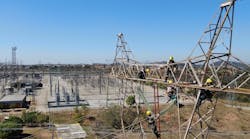Among the 79 speakers at the recent Utility Analytics Week conference, I had an interesting discussion regarding customer segmentation-related analytics trends with American Electric Power’s Stephen Payne.
PM: How did this customer segmentation initiative at AEP get underway?
SP: This work started with an interesting challenge we were given by one of our executive VPs. After having heard about other utilities looking at analytics for customer-related segmentation, our VP then asked our team to find some tangible areas where AEP could go all in and gain value from this type of analytics work.
We took on this challenge in 2015. We proceeded by working in support of our customers with our IT department, thinking about what value we could get out of our existing data. We started asking ourselves about this data, which we had collected over many years, seeking ways we could apply it to understand our customer better and improve the reliability and resiliency of our grid. We had a short engagement with a vendor at the beginning of the process, and this helped us define our starting point and "tee" things up from there, and after that, we utilized internal resources as we proceeded.
It was a good start, looking at our options and defining where we were. Then, after this 2015 initiative, we started a second initiative in 2016, focused on improving the customer experience. It was the start of a comprehensive program that we rolled out as one of those strategic goals of the company to improve the customer experience.
Fundamentally, our work has improved how much we understand about our customers and helps us leveraging things we are doing well and change things which might otherwise negatively impact the overall customer experience.
In all this work, the customer segmentation turned out to be a pillar underneath the other work, because we needed to be able to talk to what different types of customers we had and how we should think differently about a customers. Segmentation ended up being the foundation and helped to provide the direction for the overall initiative.
PM: What are you finding of value in terms of the wider utility community, with your work with Utility Analytics Institute?
SP: There is a great range of value and a great value proposition to our participation in Utility Analytics Week, and with UAI’s Working Groups and overall community. There is absolutely great value there. Shane Forrestal (Data Scientist at AEP) and I are both working on this segmentation work and are both members of the UAI Customer Segmentation Working Group. And it is not just the value of our collaborating and both being presenters at the UA Week event, though that is great—it is also the interactions with people at UAI from utilities all over North America. It is very interesting to me, for example, that a lot of the things the utilities are talking about, despite wide variations geographically, teach us that we face a lot of the same challenges. The variations we face help inform us about what our options are, and what we should expect will be similar or different. Whether West Coast or East Coast, Northern or Southern, we face a lot of the same challenges, and are dealing with differences in regulatory, business, demography, and the like. We all are trying to be more proactive in addressing customer needs and challenges.
We are all also trying to improve our internal processes. And we learn from each other’s experiences with these efforts. Whether it is internal process improvement work, or customer-facing initiatives like the promotion of paperless billing, we are all looking forward to the conversations and ideas we will exchange.
As a recent example, after a conference in Chicago, we reached out to a utility in California, and had some great exchanges regarding customer segmentation.
Bringing back new ideas we can apply to things that are happening right now is a very powerful benefit for us in our work with Utility Analytics Institute. And Shane Forrestal and I are also getting great value in our UAI work as members of the Customer Working Group.
PM: How do you separate out the two steps, first getting customers interested in participating in new programs, and second, being able to deliver those programs in a big way, if you get really good, close to 100% buy-in from customers?
SP: We do not want to do “little” one-off types of programs--I think we are really differentiating things we can do via segmentation by being really strategic about it, rather than focusing only on specific programs. We are thinking about who our customers are and how we can best meet their needs, instead of taking a product-centric focus about how to get customers to use certain products or services we have or can now provide. Instead the big questions are about the things we currently cannot do for our customers--things that would be good for us to do in the future.
PM: That is very exciting! Thanks so much for your time, and for your contribution to building a better grid for our customers.
SP: You are welcome!
Do you have a great analytics case study or project to share? Utility Analytics Institute is now accepting proposals for sessions at Utility Analytics Summit, April 16-18 in Irvine, CA. link: http://utilityanalyticssummit.com/speaking-opportunities/



